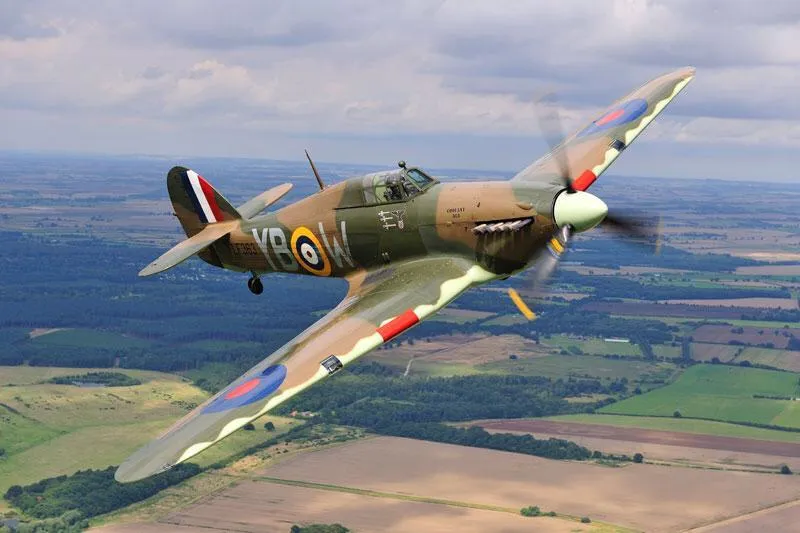Green, Kenneth Henry (Sergeant)
Killed in Flying Accident 1943-May-12


Birth Date: unkown date
Born:
Home:
Enlistment:
Enlistment Date: Unknown
Service
RAF
Unit
1 OTU- Operational Training Unit
Base
Bagotville, Quebec, Canada
Rank
Sergeant
Position
Sergeant
Service Numbers
1321270
Crew or Other Personnel
Hurricane 5624
Hurricane serial: 5624

Source BBMF
The Hawker Hurricane is a single-seat fighter aircraft of the 1930s"“1940s that was designed and predominantly built by Hawker Aircraft Ltd. for service with the Royal Air Force (RAF). The Hurricane developed through several versions, as bomber-interceptors, fighter-bombers, and ground support aircraft in addition to fighters. Versions designed for the Navy were popularly known as the Sea Hurricane, with modifications enabling their operation from ships. Some were converted to be used as catapult-launched convoy escorts. By the end of production in July 1944, 14,487 Hurricanes had been completed in Britain and Canada.
A major manufacturer of the Hurricane was Canadian Car and Foundry at their factory in Fort William (now Thunder Bay), Ontario. The facility's chief engineer, Elsie MacGill, became known as the "Queen of the Hurricanes". The initiative was commercially led rather than governmentally, but was endorsed by the British government; Hawker, having recognized that a major conflict was all but inevitable after the Munich Crisis of 1938, drew up preliminary plans to expand Hurricane production via a new factory in Canada. Under this plan, samples, pattern aircraft, and a complete set of design documents stored on microfilm, were shipped to Canada; the RCAF ordered 20 Hurricanes to equip one fighter squadron and two more were supplied to Canadian Car and Foundry as pattern aircraft but one probably did not arrive. The first Hurricane built at Canadian Car and Foundry was officially produced in February 1940. As a result, Canadian-built Hurricanes were shipped to Britain to participate in events such as the Battle of Britain. Canadian Car and Foundry (CCF) was responsible for the production of 1,451 Hurricanes. Wikipedia and Harold A Skaarup Web Page
Aircraft Images
Hurricane 5624
Hurricane Mk. XII 5624
With the Test & Development Establishment at RCAF Station Rockcliffe, Ontario, tested on Noordyun No. 10 skiis in February and March 1943. Photo on skiis in "Canadian Aircraft Since 1909". Assigned to No. 1 (F) Operational Training Unit at Bagotville, Quebec on 22 April 1943. Delivered to Bagotville on 9 May 1943, coded "20". Went missing on a training flight on 12 May 1943. Pilot Sgt. H.K. Green, RAF killed. Wreckage not found for several months, had crashed through ice of Lac Missippi, initially incorrectly reported as Lac Chapleau, 75 miles south of Bagotville. Allocated to No. 9 Repair Depot for write off on 9 June 1943.1942-11-30 Taken on Strength No. 3 Training Command for Test & Development Establishment 2019-08-20
1943-May-12 Accident: 1 Operational Training Unit Loc: Aerodrome Names: Green
1943-05-12 Accident Category A 2022-02-01
1943-11-19 Struck off Strength reduced to spares and produce 2022-02-01
 Library and Archives Canada Service Files (may not exist)
Library and Archives Canada Service Files (may not exist) Hurricane
Hurricane Wikipedia Hurricane
Wikipedia Hurricane Harold A Skaarup Web Page
Harold A Skaarup Web Page Hurricane - Kestrel Publications
Hurricane - Kestrel Publications